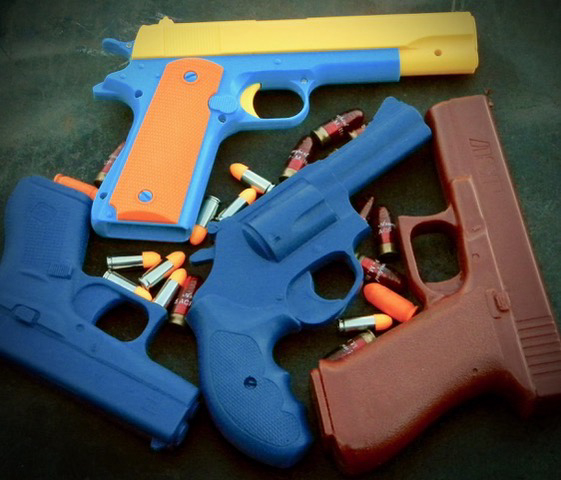
Dry practice is the easiest best way to improve your defensive skills with the firearm. I preach this during classes, explaining all the advantages. Yet, when students return for further instruction and I inquire about their practice routines very few respond with, “I dry practice regularly.” And, I can tell a dramatic difference between those who do dry practice and those who only live fire. Shooters who dry practice are exponentially better. Here’s why.
Using a firearm for self-defense involves much more than just shooting. The fundamentals of responding to a threat are Move, Communicate, Use Cover, Shoot – if or as necessary – and Think - problem solving at high speed. All of these actions are contrary to our natural instincts. And performing them at a subconscious level, which frees up the conscious mind to evaluate and make decisions requires plenty of repetition. The conscious mind says, “Danger.” The subconscious mind performs the draw or presentation of the pistol while you’re moving, communicating, and getting to cover. The conscious mind decides to “Fire;” the act of shooting occurs at a subconscious level.
This level of “processing” only occurs after plenty of repetition. It depends on who you read or study, and certainly on the individual, but generally it takes about 8,000 repetitions to learn something. This means you can perform it on demand, under stress and in any type conditions. Since most of us have lives that consume a lot of our time, the only way to get these repetitions is with dry practice.
The learning curve is steeper with dry practice. On the range everyone gets caught up in speed and accuracy. As in shooting really fast, not very accurately and little if any time spent on moving, communicating, the use of cover or cultivating a problem-solving mindset. Of course, most ranges won’t let you work for the holster while moving, or use cover or sometimes even fire more than one shot in three seconds.
Dry practice should be done slowly, concentrating on each technique and performing the sequence at a speed that minimalizes your chances of making mistakes. When you do make a mistake, slow practice allows you to correct and compensate before it becomes ingrained and habitual. From a learning aspect, we know retention is higher with a short session of practice, then stopping and literally sleeping on it. More learning occurs during dry practice; the improvement is exponentially greater than live fire.
Dry practice also produces a great return financially. After an initial investment in gear – dummy pistol and dummy ammo, which is less than $100 – you’re set for a lifetime of practice. There’s no ammo to buy, money spent on gas or time burned travelling back and forth to the range. With dummy weapons and ammo you can work on all your fighting skills, including manipulations – reloads and malfunctions at home safely, and on your schedule.
This isn’t the first time I’ve mentioned the benefits of dry practice, and it certainly won’t be the last. It’s simply the best way to develop your defensive skills – for a variety of reasons. And, if you ever need these skills to defeat a threat you’ll be glad dry practice was a part of your life.
— Tiger McKee
McKee is director of Shootrite Firearms Academy, which is celebrating its twenty-fifth anniversary. He is the author of The Book of Two Guns, AR-15 Skills and Drills, has a regular column in American Handgunner and makes some cool knives and custom revolvers. Visit Shootrite’s Facebook page for other details.